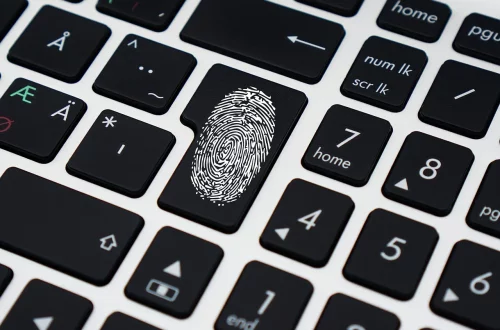
Effective Ways to Get Rid of Period Stains Quickly and Easily
Period stains can be an unwelcome surprise, creating stress and discomfort during an already challenging time. Many individuals face the dilemma of how to effectively manage these stains, whether they occur on clothing, bedding, or upholstery. The urgency to address these stains is often heightened by the fear of permanent damage that can result from improper cleaning methods.
In daily life, menstrual hygiene is an essential aspect that requires attention, not just for comfort, but also for maintaining cleanliness and confidence. The reality is that accidents happen, and knowing how to quickly and effectively tackle period stains can make a significant difference. The key lies in understanding the nature of the stains and employing the right techniques tailored to the type of fabric or surface affected.
As we navigate through the various methods available, it’s crucial to prioritize solutions that are not only effective but also safe for the materials involved. By equipping ourselves with practical tips and tricks, we can alleviate the anxiety associated with period stains and ensure a more seamless experience during menstruation. In this article, we will explore several effective approaches to eliminate period stains quickly and easily, empowering individuals to take control of their menstrual hygiene with confidence.
Understanding the Nature of Period Stains
To effectively remove period stains, it is essential to first comprehend what causes them. Menstrual blood is composed of blood, vaginal secretions, and uterine lining, which can vary in color and consistency depending on the individual and the stage of their menstrual cycle. This biological composition can lead to different staining properties, making some stains easier to remove than others.
When blood comes into contact with fabric, it can bond with the fibers, causing a stain that can be challenging to eliminate if not treated promptly. The longer the stain sits, the more difficult it becomes to remove. Therefore, immediate action is crucial. Most period stains are protein-based, which means that hot water, often used in conventional stain removal, can actually set the stain, making it more permanent.
Understanding this, the best approach to treating period stains typically involves using cold water and specific cleaning agents that break down the proteins in blood. The choice of cleaning method can also depend on the type of fabric affected. For example, delicate fabrics like silk require gentler cleaning solutions, while cotton can withstand more vigorous treatments.
Additionally, it’s important to consider any pre-existing fabric treatments or stains. Always check labels for cleaning instructions and test any stain removal solution on a small, inconspicuous area first. This will help avoid further damage to the fabric while ensuring that the chosen method is appropriate.
In summary, recognizing the nature of period stains is the first step in effectively managing them. By understanding their composition and the best practices for removal, individuals can approach the problem with confidence and ease.
Immediate Actions to Take
When faced with a period stain, the first step is to act quickly. Immediate action can significantly increase the chances of complete stain removal. If you notice a stain, the first thing to do is to rinse the affected area with cold water. This helps to flush out as much of the blood as possible before it has a chance to set into the fabric.
To rinse, hold the stained fabric under cold running water, allowing the water to flow from the back of the stain to the front. This technique helps push the blood out of the fibers rather than further embedding it. If you are at home, using a sink or bathtub is ideal. However, if you are on the go, using a damp cloth to blot the stain can also be effective.
After rinsing, you can apply a stain remover. There are numerous commercial stain removers available, but you can also create a simple homemade solution. One effective method involves mixing equal parts of cold water and white vinegar or lemon juice. Both vinegar and lemon juice have natural bleaching properties that can help break down the stain without damaging the fabric.
Apply the solution directly to the stained area and let it sit for about 10 to 30 minutes, depending on the severity of the stain. After allowing it to soak, rinse the area again with cold water.
In some cases, a gentle scrubbing with a soft-bristled toothbrush or cloth can help lift the stain. Be cautious not to scrub too hard, as this can damage the fabric.
Once the stain seems to have faded, launder the item as usual, following the care instructions on the label. Always check the stained area before drying, as heat from the dryer can set any remaining stain. If the stain persists, repeat the process until it is completely gone.
Alternative Natural Remedies
For those seeking natural alternatives to commercial stain removers, several household items can effectively tackle period stains. These options are often more environmentally friendly, and they can be just as effective when used correctly.
One popular remedy is baking soda. This versatile ingredient can be transformed into a paste by mixing it with a small amount of water. Apply the paste directly to the stain and let it sit for about 30 minutes. Once the time is up, rinse with cold water. Baking soda not only helps lift the stain but also neutralizes odors, making it a great choice for clothing and linens.
Another effective option is hydrogen peroxide. This common household disinfectant can work wonders on blood stains. When using hydrogen peroxide, it’s essential to test it on a small area first, as it can bleach certain fabrics. If safe to use, pour a small amount directly onto the stain, allowing it to fizz and bubble. After a few minutes, blot with a clean cloth and rinse with cold water.
Salt can also be a useful tool in removing period stains. Create a paste by mixing salt with cold water. Apply it to the stain and let it sit for 15 to 20 minutes before rinsing. The abrasiveness of salt can help lift the stain from the fabric fibers.
Lastly, consider using cornstarch. Mix cornstarch with cold water to form a paste, applying it directly to the stain. Once it dries, brush off the residue and rinse with cold water.
These natural remedies can be effective alternatives for those who prefer to avoid harsh chemicals. They are also usually readily available in most households, making them convenient options in a pinch.
Preventative Measures for Future Incidents
While accidents can happen, taking preventative measures can significantly reduce the chances of experiencing period stains. One of the most effective strategies is to choose the right menstrual products. Consider using period-proof underwear or menstrual cups, which can provide additional protection against leaks.
If you prefer traditional products like tampons or pads, ensure you change them regularly to minimize the risk of overflow. Understanding your flow can also help you anticipate when you might need to take extra precautions.
Additionally, wearing darker clothing during your menstrual days can help mask any potential stains. This simple strategy can provide peace of mind and allow for greater comfort throughout the day.
When it comes to laundry, pre-treating your garments can also be beneficial. Before washing, spray any potential stains with a stain remover or a mixture of water and vinegar. This pre-treatment can help break down any stains before they go into the wash.
Finally, always carry a small stain-removal kit in your bag. This can include travel-size stain remover, wipes, or even a small bottle of water for rinsing. Being prepared can make a world of difference in dealing with unexpected stains.
By implementing these preventative measures, individuals can take control of their menstrual hygiene and reduce the likelihood of dealing with period stains in the future.
—
**Disclaimer:** This article is not intended as medical advice. For any health concerns or issues, please consult a qualified healthcare professional.




